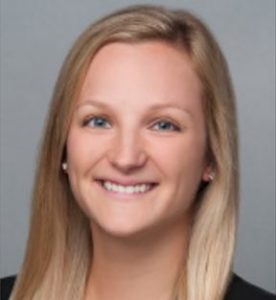
Personal Account: Virtual Visits
Kristina Schnitzer is an MGH Psychiatrist.
“Essentially overnight, my kitchen table became my office. During the COVID-19 pandemic, my practice as a Fellow in Public and Community Psychiatry at the North Suffolk Mental Health Freedom Trail Clinic, a community mental health center, has shifted from 100% in-person visits to conducting nearly all appointments by telephone. My patients and I have had to rapidly adapt to “virtual visits” that insert a layer of technology between customarily face-to-face human interactions.
Reflecting on the past several months, I am most struck by how adaptable we all were when we needed to be. Patients, pharmacies, treatment teams, group homes, agencies, and families have all worked together in new ways and at breakneck speed to allow continued care to a vulnerable population during an unprecedented time. Regulatory restrictions that seemed immovable (i.e. clozapine blood draw requirements) have lessened, new technology appeared out of thin air.

“…new ways and at breakneck speed to allow continued care to a vulnerable population during an unprecedented time…”
There have been some surprise upsides. The increased flexibility of conducting visits by phone has allowed me to connect with several patients that we had not been able to get into the clinic, but who were willing to meet by phone. Patients who are working have found it easier to squeeze in a phone-call appointment than travel to/from the clinic, which could take a half or whole day depending on their location. I sense that a lot of patients may feel more comfortable over the phone with fewer factors out of their control, and it’s certainly possible that we’re both able to be a bit more at ease – the patient on their couch, me at my kitchen table, as opposed to being cramped in a tiny office. Alcoholics Anonymous has taken their meetings to Zoom – many of my patients have reflected that this has been an amazing resource and has also removed a barrier to those who have felt too anxious to attend in-person.
On the flipside, I think that a good deal has been lost. Direct in-person observation of the patient may be the biggest casualty with telephone appointments. There is so much I can observe before sitting down with someone – how did they walk into the clinic, what does their body language say, how are they interacting with others, how is their self-care, are they calm or upset? Patients are often unaware of the subtle development of movement abnormalities; querying for new movements or stiffness over the phone can’t replace in-person assessment. This lack of sight has necessitated for me a heightening and appreciation for sound as I try to discern the nuances of speech, tone of voice, and pacing.
Now that “virtual visits” have arrived, they are unlikely to go away, even as clinics may begin to return to more normal operations. If we are thoughtful about it, combining in-person and virtual appointments could be a great way to capitalize on the benefits of each method and personalize an appropriate treatment plan for each patient. Importantly, we should be reaching out to our patients to hear of their experience and use this opportunity to decide together on next steps in visit and treatment planning. I’m inspired by our collective resilience and what we have been able to accomplish thus far.”
Kristina Schnitzer, MD
Psychiatrist, Massachusetts General Hospital
Instructor, Harvard Medical School